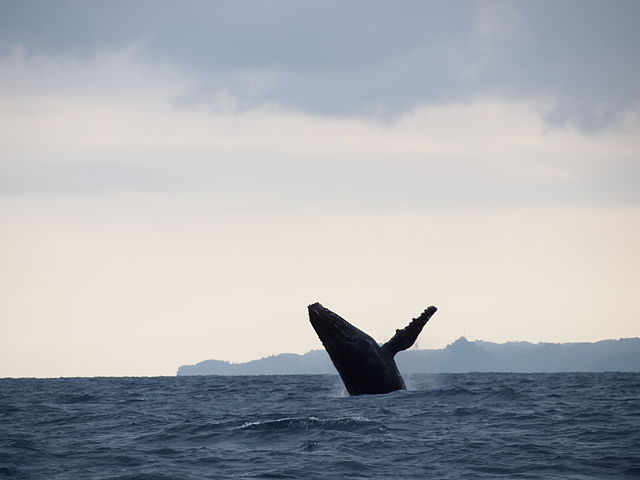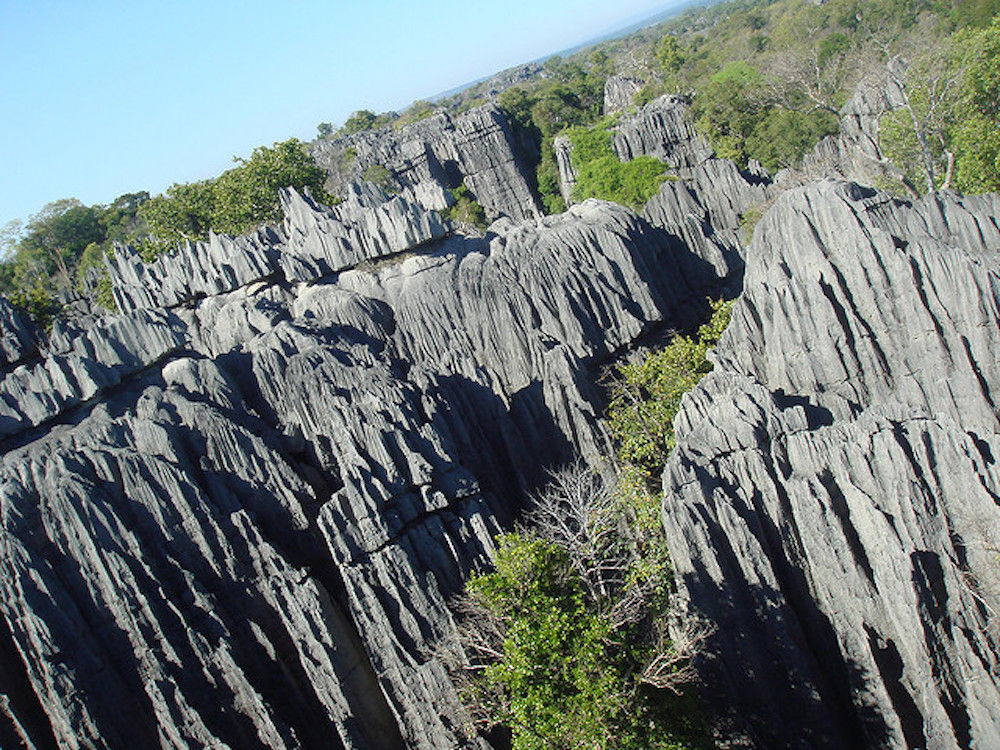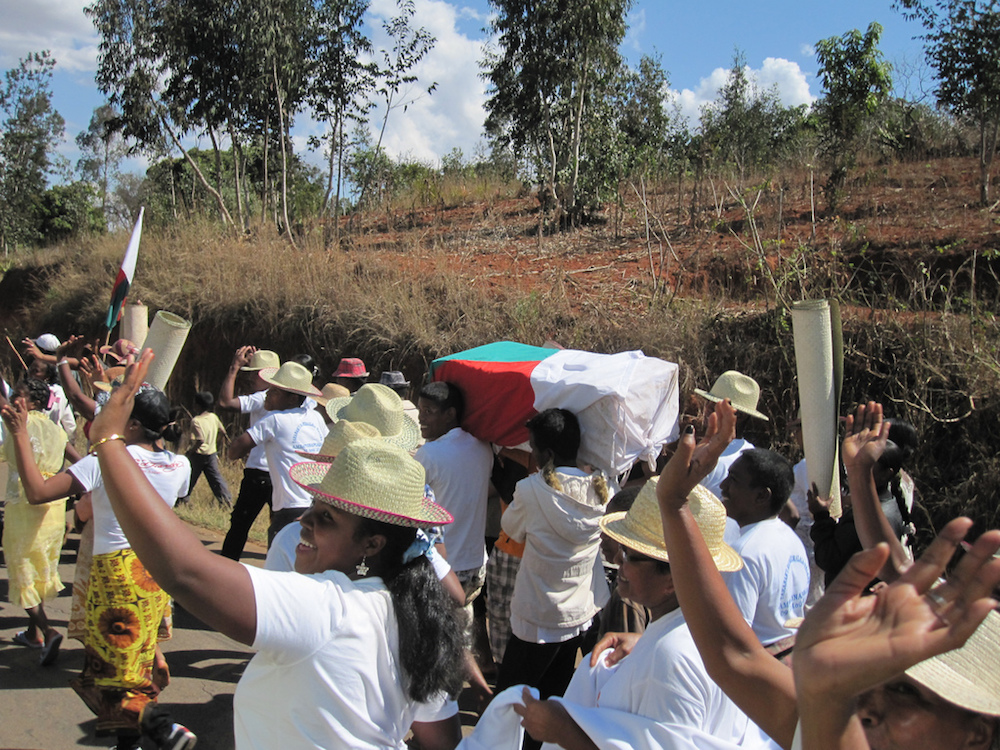Madagascar is literally a world apart. A lot of breaking away from mainland Africa, and then from India, took place before Madagascar became an island nation marooned in the western corner of the Indian Ocean. This drifting away resulted in isolated evolution that eventually gave rise to Madagascar’s distinctive biodiversity: 90% of all animal and plant species found in Madagascar exist nowhere else.
Vividly colored panther chameleons, tenrecs, tomato frogs, comet moths, Satanic leaf-tailed geckos, hissing cockroaches, and a long list of bird species – to say nothing of tortoises, turtles, dolphins, manta rays, sharks, colorful reef fishes – are just some of the cast that make this island nation a biologist’s Eden. Even if identifying species is not your thing, there are plenty other reasons why Madagascar should be on your bucket list.

Courtesy of Nomis-Simon/Flickr
Hear Lemurs Wail Like a Whale (or Plié Like a Ballerina)
Have you ever wondered why lemurs were in the “Madagascar” animated film in the first place? That’s because they are endemic to the country. You can’t see lemurs anywhere else. Madagascar splitting from mainland Africa allowed lemurs to thrive as there was no big game to hunt them down (except their nemesis fossa, a relative of mongoose that’s also endemic to Madagascar). The result: a population explosion of 101 species.
To hear the singing lemur (Indri indri), go to the Andasibe-Mantadia National Park close to the capital, Antananarivo, and in other protected lowland jungles and tropical forests. There’s a dancing lemur too (see above). Sifakas (Propithecus) are so nicknamed because when on land, they jump sideways with their arms held out for balance. You can find them prancing about in Ankarafantsika National Park, Berenty Reserve, and Ranomafana National Park where around 20 other lemur species live.
Parade Through the Avenue of Baobabs
If you believe the Little Prince, you might suspect that baobabs (Adansonia digitata) also exist in his tiny planet, but the 9 species occur only on Earth, six of which are in Madagascar. Baobabs are mind-bendingly ancient – they grew more than 200 million years ago before the supercontinent Gondwana broke up. The largest grove of the mightiest trees – which can grow up to 30m – can be found in Menabe, but Morondava is favored by those who wish to enjoy cocktails after watching the sunset at the Avenue of Baobabs.

(lemurbaby/Wikipedia Commons)
Watch Antarctic Humpback Whales Cavort
A lone breaching whale is a sight to behold. But a handful, all at the same time? Every year, from June to September, hundreds of 30 to 50-ton behemoths make their annual journey to the warm waters off the eastern coast of Madagascar. They especially favor the welcoming, shark-less waters around Ile Sainte Marie where they breed and calve after bulking up in the Antarctic seas. A whale watching cruise with an on-board specialist gets you close to the whales so you can better admire the acrobatic stunts of male humpbacks to attract the females. On a cruise, you would also hear the males’ complex vocal displays via an on-board hydrophone.
Find Your Sunny Spot in 5,000km of Coastline
In Madagascar, you don’t have to jostle with crowds for towel-sized beachfront real estate. The choices are overwhelming as you can go practically anywhere and have a beach to yourself. But if you are after beautiful beaches and water-based activities not far from the madding crowd, the archipelago of Nosy Be in the northwest coast of Madagascar is the country’s number one beach destination. Toliara in the southwest coast makes a convenient launching point to the Great Reef, a 450km coral reef system home to some 6,000 species. As the southwest coast faces the Mozambique Channel, a potential World Heritage marine site, it’s also Madagascar’s prime diving destination.

Courtesy of Olivier Lejade / flickr
Live on the (Razor’s) Edge at the Stone Forest of Tsingy de Bemaraha National Park
A UNESCO World Heritage Site, the Tsingy de Bemaraha National Park is a veritable forest of limestone needles rising up to 100 meters, and were formed when karstic plateaus were vertically and horizontally undercut by groundwater. The result is ‘tsingy,’ a place “where one cannot walk barefoot.” As the terrain is difficult to traverse, these badlands have become a refuge within a refuge: scientists suspect that species may be endemic in areas as small as a limestone spike.
Marvel at the Kaleidoscope of Landscapes
Few places on Earth pack a variety of landscapes in such a small area, but in Madagascar, you can spend the morning in a rain forest and the afternoon in a desert. Karstic limestone needles in the west stand in sharp contrast to rounded and eroded hills in the central highlands. After seeing sandstone canyons, you may be surprised at the sight of terraced rice paddies. To get an idea of just how varied Madagascar’s terrain can be in such small a space, just go to Isalo National Park.

Courtesy of NH53 / flickr
Watch the Malagasy Dance With Their Dead
During the Day of the Dead, Mexicans dance with caricatures of death, but not with their departed relatives. In a funerary tradition called ‘famadihana’ or ‘turning of the bones,’ the Malagasy take it to another level by bringing their ancestors out of the crypt every seven years (or whenever the family can afford it) and rewrapping them in new cloth. The extended families then dance with joy to the sound of live, upbeat music as the rewrapped corpses are reentered into the crypt.
Famadihana is based on the belief that as long as the bodies have not fully decomposed, their ancestors have not left this world permanently and are still able to communicate with the living.
Madagascar’s geographical isolation also makes it an undertouristed destination, leaving huge parts of it relatively untouched by Western influence. There are still vast tracts of the country that remain uninhabited and only occasionally explored because the state of the roads make it difficult to get around. Outside of major cities, it’s 4WD driving if you can’t put up being squished in taxi-brousses with a dozen other passengers.
The island’s remoteness, however, and all the difficulties that come with it, make it all the more appealing in a world homogenized by unchecked commercialism and development. Like the country’s wildlife, places like Madagascar are in danger of disappearing, so enjoy them while they are still around.
This article originally appeared on Demand Africa
More from AFKTravel:
The Fantastic Hotels Of Nosy Be, Madagascar
The Heart Of Madagascar: 10 Things To Do In Antananarivo
7 Events In Madagascar You Need To Attend
Want to discover the finer side of Africa? Sign up for our weekly newsletter.
